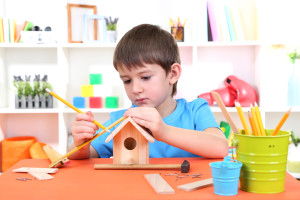Thanks to the @TeacherCents twitter feed, I came across something about a Maker Faire Conference that got my attention. This led me to discover the Maker Culture. Maker Culture is composed of individuals young and old who are interested in making things. This encompasses computer programmers, dressmakers, artists and artisans, to gardeners and homebuilders; basically anyone with a desire to create rather than consume is included.
For those who grew up with a local hobby shop and an active applied arts program in school, this Maker Culture might not sound like anything new. Elements of it have existed for a long time in the US, but without having a unifying banner. Americans have been constructing their own homes, radios and boats; pickling and canning food, and many other things for decades. After all, the old adage “if you want something done right, better do it yourself,” is an American one. The do it yourself (DIY)ethos in modern times can be seen in a wide array of expressions ranging from Punk and Indie Rock to Bob Vila’s instructional show This Old House. The “learning by doing” philosophy and practice has been lacking is in mainstream education. Thanks to the creation of the Maker Movement this gap in education will hopefully change.
It was back in 2005, with the launch of MAKE Magazine that the Maker Movement can be said to have officially started. Later, under President Obama, the Maker Movement gained prominence and the national spotlight. President Obama and the U.S. Department of Education recognized the hands on, do it yourself philosophy and practices of the Maker Movement as complimentary to the Educate to Innovate Initiative. The goal of the initiative is to make science, technology, engineering, and mathematics (STEM) exciting, interesting, and accessible to American students and teachers. They hope this will lead to a renaissance of manufacturing, development and innovation that will help jump start our economy and help America and its citizens prosper. Just last month the White House held their very own Maker Faire! To learn more about that historic day, click here.
The Maker Movement is spreading to classrooms and communities nationwide with the help of organizations like the Maker Education Initiative. The Maker Culture is already having an impact on our economy as well. Etsy.com is just one great example of an e-commerce marketplace enabling makers to sell their wares. Etsy.com topped $ 1 billion in total annual transactions in 2013! Etsy executives also attended the White House Maker Faire and wrote about it here. Although I could not find a direct mention of the Maker movement in this OutsideOnline.com article it does capture the transformative power of what a Maker culture spirit can produce.
I envision shuttered factories, mills, and barren farmlands being reopened by a new generation of tinkerers, engineers, farmers, gardeners, clothing makers,computer builders and more. After this brief journey into this subject matter I am more optimistic about the future than I have been for some time. I am not the only one who is getting excited by all this! To read more about the Maker Movement and its potential implications check out Time Magazine and Huffington Post’s articles.
In our next blog teachercents.com will continue to shed light on inspiring programs, groups and individuals working towards positive change in K-12 education and beyond. Thank you for reading and sharing! If you haven’t done so yet please sign up for our mailing list so you won’t miss out on exciting offers coming soon from teachercents.com.














Leave a Reply